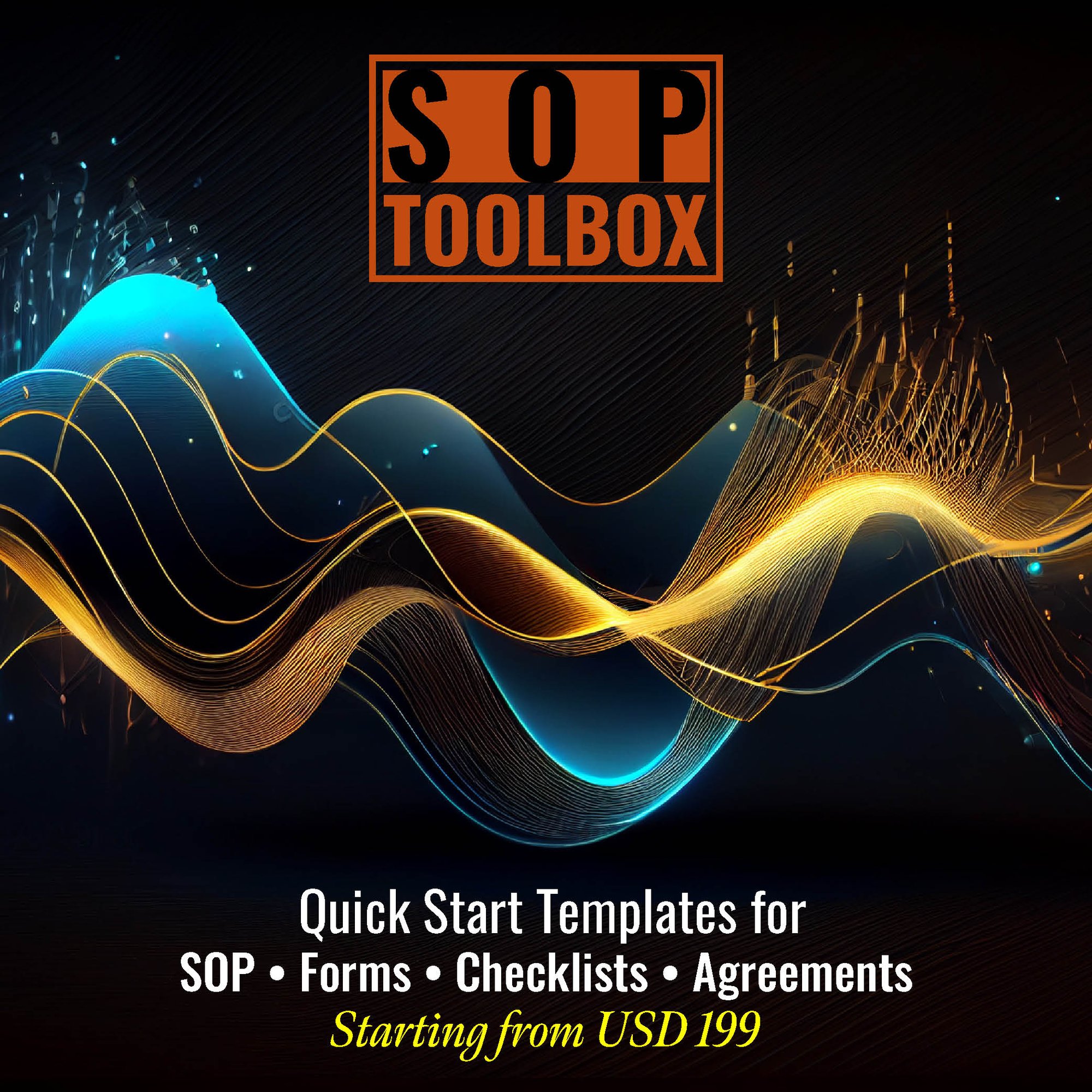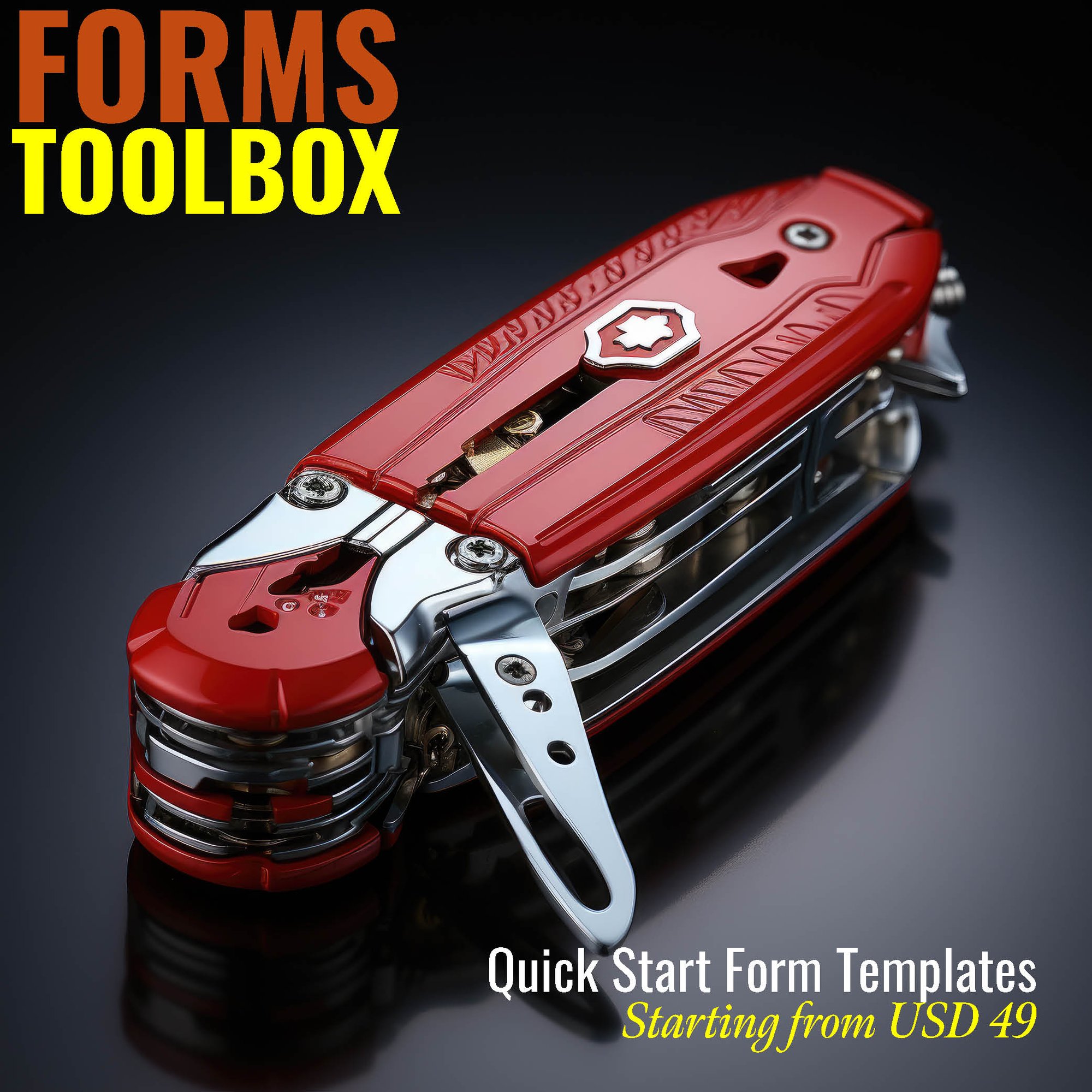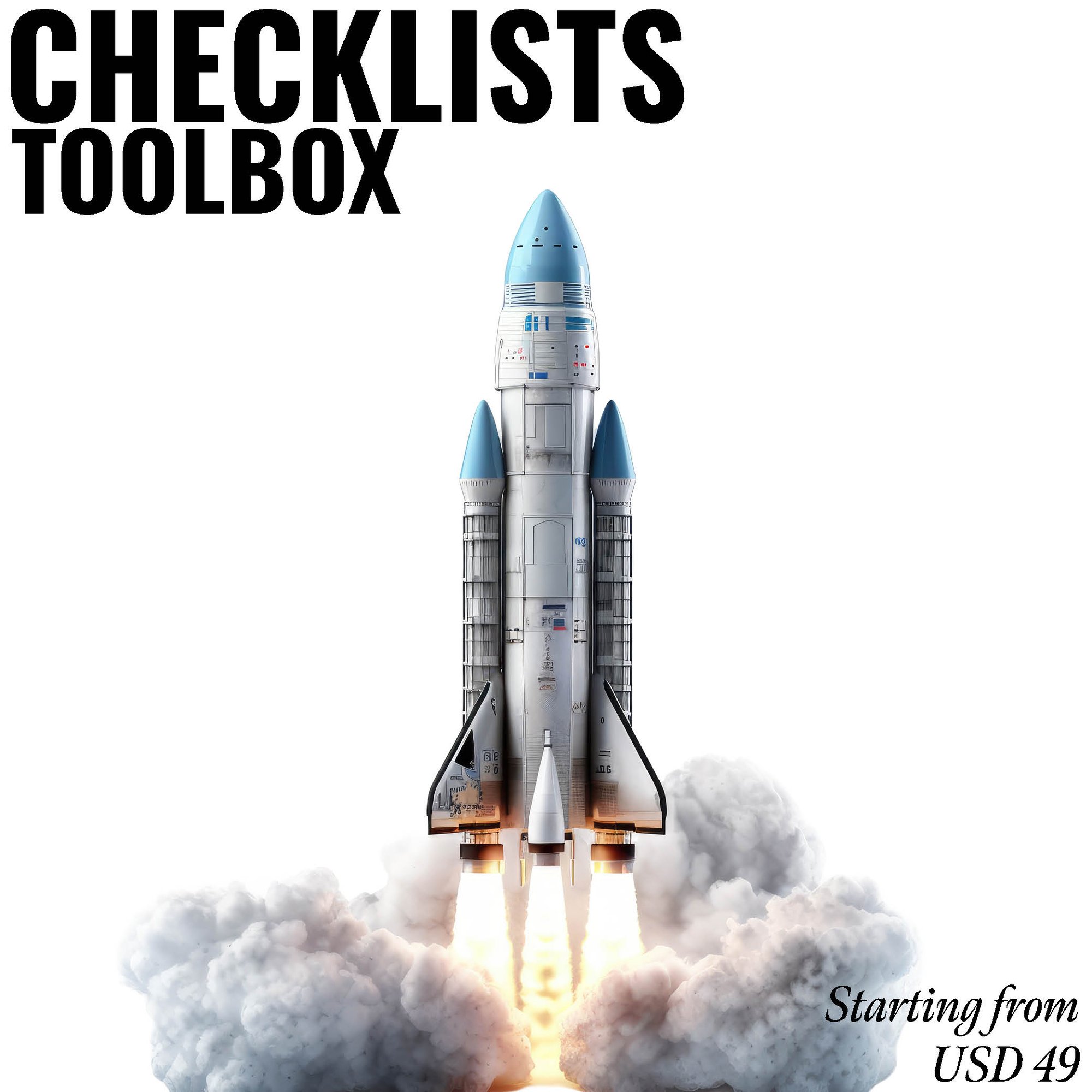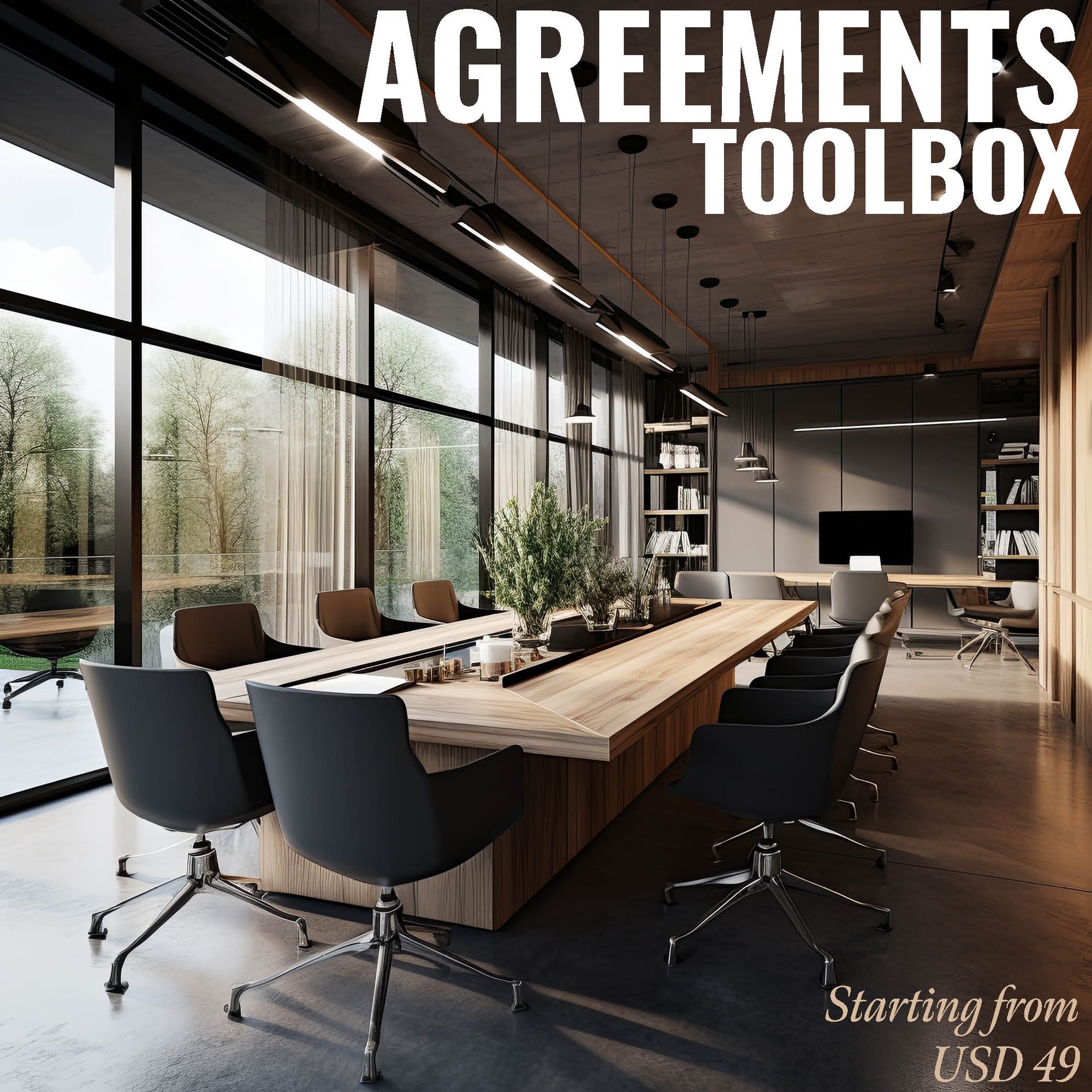The importance of an SOP (Standard Operating Procedure) Manual for Overhead Traveling Crane, Hoist, and Monorail System Manufacturing is paramount within the heavy machinery and industrial equipment sector. Here's why it holds a pivotal role:
-
Product Quality: The manual ensures standardized processes, leading to consistent, high-quality manufacturing. This is essential to produce reliable, durable, and safe lifting equipment.
-
Safety: Overhead cranes, hoists, and monorail systems are used in demanding industrial environments. The manual incorporates safety protocols to protect workers, minimizing accidents, and ensuring a secure work environment.
-
Efficiency: SOPs streamline manufacturing processes, reducing errors and resource waste, ultimately improving operational efficiency and cost control.
-
Regulatory Compliance: It helps manufacturers meet stringent industry standards and safety regulations, reducing the risk of non-compliance, legal issues, and associated financial penalties.
-
Employee Training: The manual serves as a crucial resource for training new staff and enhancing the skills of existing employees, ensuring a skilled and knowledgeable workforce.
-
Reputation and Customer Trust: High product quality, safety, and consistency build a strong reputation in the industry, attracting clients who trust the reliability of the equipment.
In summary, the importance of an SOP Manual for Overhead Traveling Crane, Hoist, and Monorail System Manufacturing lies in its role in ensuring product quality, safety, efficiency, compliance, employee development, and brand reputation, all of which are essential for the success and competitiveness of businesses in this sector.
- Aerial work platforms manufacturing
- Automobile wrecker (i.e., tow truck) hoists manufacturing
- Block and tackle manufacturing
- Boat lifts manufacturing
- Chain hoists manufacturing
- Cranes, overhead traveling, manufacturing
- Davits manufacturing
- Hoists (except aircraft loading) manufacturing
- Locomotive cranes manufacturing
- Monorail systems (except passenger-type) manufacturing
- Overhead traveling cranes manufacturing
- Pulleys (except power transmission), metal, manufacturing
- Ship cranes and derricks manufacturing
- Winches manufacturing
- Wire rope hoists manufacturing
CLICK HERE to download the List of SOPs Document in PDF format. Please share this document with your clients, colleagues and senior officers.
Top 50 Standard Operating Procedures (SOPs) for Overhead Traveling Crane, Hoist, and Monorail System
SOP-1074-001: Standard Operating Procedure for Design and Engineering Specifications
SOP-1074-002: Standard Operating Procedure for Material Procurement and Inspection
SOP-1074-003: Standard Operating Procedure for Welding and Fabrication Procedures
SOP-1074-004: Standard Operating Procedure for Quality Control Checks for Raw Materials
SOP-1074-005: Standard Operating Procedure for Machining and Component Manufacturing
SOP-1074-006: Standard Operating Procedure for Assembly of Crane Components
SOP-1074-007: Standard Operating Procedure for Hoist Motor Installation and Calibration
SOP-1074-008: Standard Operating Procedure for Monorail System Structure Assembly
SOP-1074-009: Standard Operating Procedure for Electrical Wiring and Connection
SOP-1074-010: Standard Operating Procedure for Control Panel Installation and Setup
SOP-1074-011: Standard Operating Procedure for Load Testing for Cranes and Hoists
SOP-1074-012: Standard Operating Procedure for Monorail System Load Capacity Testing
SOP-1074-013: Standard Operating Procedure for Crane Painting and Surface Treatment
SOP-1074-014: Standard Operating Procedure for Final Inspection and Quality Assurance
SOP-1074-015: Standard Operating Procedure for Packaging and Shipping Procedures SOP-1074-016: Standard Operating Procedure for Installation and Commissioning at Client Site
SOP-1074-017: Standard Operating Procedure for Safety Measures in Manufacturing SOP-1074-018: Standard Operating Procedure for Employee Training on Equipment Operation
SOP-1074-019: Standard Operating Procedure for Preventive Maintenance for Equipment
SOP-1074-020: Standard Operating Procedure for Troubleshooting and Repairs
SOP-1074-021: Standard Operating Procedure for Documentation and Record Keeping SOP-1074-022: Standard Operating Procedure for Customer Support and Service
SOP-1074-023: Standard Operating Procedure for Emergency Response Procedures
SOP-1074-024: Standard Operating Procedure for Regulatory Compliance in Manufacturing
SOP-1074-025: Standard Operating Procedure for Environmental Health and Safety Guidelines
SOP-1074-026: Standard Operating Procedure for Facility Security Measures
SOP-1074-027: Standard Operating Procedure for Vendor Evaluation and Qualification
SOP-1074-028: Standard Operating Procedure for Continuous Improvement Initiatives SOP-1074-029: Standard Operating Procedure for Lean Manufacturing Principles
SOP-1074-030: Standard Operating Procedure for Standardized Work Instructions
SOP-1074-031: Standard Operating Procedure for Equipment Calibration and Verification
SOP-1074-032: Standard Operating Procedure for Facility Layout and Organization
SOP-1074-033: Standard Operating Procedure for Quality Management System Implementation
SOP-1074-034: Standard Operating Procedure for Supplier Relationship Management SOP-1074-035: Standard Operating Procedure for Employee Health and Safety Training
SOP-1074-036: Standard Operating Procedure for Personal Protective Equipment (PPE) Usage
SOP-1074-037: Standard Operating Procedure for Hazardous Material Handling
SOP-1074-038: Standard Operating Procedure for Ergonomic Workstation Design
SOP-1074-039: Standard Operating Procedure for Noise Control Measures
SOP-1074-040: Standard Operating Procedure for Waste Management and Recycling
SOP-1074-041: Standard Operating Procedure for Facility Cleaning and Maintenance
SOP-1074-042: Standard Operating Procedure for Inspection and Testing Protocols SOP-1074-043: Standard Operating Procedure for Supply Chain Management Procedures
SOP-1074-044: Standard Operating Procedure for Inventory Control and Stocktaking
SOP-1074-045: Standard Operating Procedure for Order Fulfillment and Delivery
SOP-1074-046: Standard Operating Procedure for Customer Complaint Resolution SOP-1074-047: Standard Operating Procedure for Product Warranty and Service Agreements
SOP-1074-048: Standard Operating Procedure for Intellectual Property Protection
SOP-1074-049: Standard Operating Procedure for Research and Development Initiatives
SOP-1074-050: Standard Operating Procedure for Crisis Management and Business Continuity
.jpg?width=648&height=339&name=Standard%20Operating%20Procedure%20-%20SOP%20ToolBox%20(1).jpg)
SOP ToolBox: If you are reading these lines, I am sure you are looking for Standard Operating Procedure guidelines or SOPs itself. In both the cases, searching in internet will not be yielding any great help. Because no company shares their SOP Development Process and certainly don’t share their SOP Documents. The best way to develop an SOP is creating one for yourself. At Fhyzics, we write SOPs day-in and day-out for companies across the globe including some of the Fortune 500 organisations. Our charge ranges from USD 5000 to USD 50000 depending upon the number of processes to be covered. Certainly, this is not affordable to small and mid-size organisations. Hence, we decided to create this SOP ToolBox to disseminate our 8-Step SOP Development Life-Cycle and best practices at an unbelievably low price.
I always say, writing an SOP is somewhere between art and science. So far you may be clueless on where to start and how to progress on an SOP? This will not be the case after you diligently go through this SOP ToolBox. We have summarised all our secrets here to get you started and to deliver a stunning SOP to your management.
Industry shipments grew consistently throughout the late 1990s, from $3.13 billion in 1997 to $4.5 billion in 1999. Shipments reached $5.12 billion in 2000. Employment increased from 17,784 workers in 1997 to 22,528 workers in 2000.
1. Standard Operating Procedures (SOP) Manual for Accounts Department
2. Standard Operating Procedures (SOP) Manual for Finance Department
3. Standard Operating Procedures (SOP) Manual for Customer Service
4. Standard Operating Procedures (SOP) Manual for CRM Department
5. Standard Operating Procedures (SOP) Manual for Credit Department
6. Standard Operating Procedures (SOP) Manual for Treasury Department
7. Standard Operating Procedures (SOP) Manual for Human Resources (HR) Department
8. Standard Operating Procedures (SOP) Manual for Training Department
9. Standard Operating Procedures (SOP) Manual for Learning & Development Department
10. Standard Operating Procedures (SOP) Manual for Administration Department
11. Standard Operating Procedures (SOP) Manual for Front Office
12. Standard Operating Procedures (SOP) Manual for House Keeping
13. Standard Operating Procedures (SOP) Manual for Safety Department
14. Standard Operating Procedures (SOP) Manual for Security Department
15. Standard Operating Procedures (SOP) Manual for Facilities Management Department
16. Standard Operating Procedures (SOP) Manual for Vigilance Department
17. Standard Operating Procedures (SOP) Manual for Legal Department
18. Standard Operating Procedures (SOP) Manual for Information Technology (IT) Department
19. Standard Operating Procedures (SOP) Manual for Sales & Marketing Department
20. Standard Operating Procedures (SOP) Manual for Design & Engineering
21. Standard Operating Procedures (SOP) Manual for Procurement Department
22. Standard Operating Procedures (SOP) Manual for Production
23. Standard Operating Procedures (SOP) Manual for SRM Department
24. Standard Operating Procedures (SOP) Manual for Supply Chain Department
25. Standard Operating Procedures (SOP) Manual for Warehouse
26. Standard Operating Procedures (SOP) Manual for New Product Development Department
27. Standard Operating Procedures (SOP) Manual for Research and Development
28. Standard Operating Procedures (SOP) Manual for Quality Department
29. Standard Operating Procedures (SOP) Manual for Calibration Department
30. Standard Operating Procedures (SOP) Manual for Maintenance Department
Geographically, the greatest concentration of hoist, crane, and monorail manufacturing takes place in the five-state region of Ohio, Michigan, Pennsylvania, Illinois, and Wisconsin, where more than a third of all the industry's establishments are located and 3,300 of its 7,900 employees work. California, with only 300 employees, has the most establishments (19). Ohio, the state employing the most people in the industry (1,000), has 17 establishments, as does Michigan (with 600 employees). Texas (600 employees) and Pennsylvania (500 employees) each have 15 establishments.
As a whole, the industry spent over $500 million on raw materials in 1994, which translates to about $3 million per establishment, roughly 40 percent below the average for all construction and related machinery manufacturing establishments. New capital expenditures, just over $59,000 per establishment, also fell far below the larger industry group average of $321,000.
- American Handling Systems Inc
- Manitowoc Cranes Inc
- Auto Crane Co
- Columbus Mckinnon Corp
- Applied Hydraulic Systems Inc
- Hydralift Amclyde Inc
- Seatrax Inc
- Progressive Crane, LLC
- Ace Industries Inc
- Washington Equipment Manufacturing Co Inc
- Hydro Hoist Marine Group
- Columbias Mecanic
- EBI Machining, LLC
- Vehicle Service Group, LLC
- Big Hook Crane And Rigging Inc
- Magplane Technology Inc
- Hoist And Crane
- Ace Gaffey
- Gaffey Inc
- Ace Industries
- Odis Crane And Equipment
- Mass Crane And Hoist Service
- Sunstream Corp
- Bob's Machine Shop Division of BMS International Inc
- E And R Industrial Sales
- George Transfer And Rigging Co Inc
- Seward And Assoc
- Gator Rigging
- Sonoma Marin Area Rail Transit
- Betamax Inc
- Ayers Enterprise Inc
- Thed Easley's Inc
- Rampley
- CWR Hawaii Inc
- Konecranes
- Advanced Overhead Systems Inc
- Ozark Boat Lifts Inc
- Hoist And Crane Co
- Independent Transfer Equipment
- Pier Place
- Corrosion Materials
- Dock Savers Inc
- Mazzella Lifting Technologies
- Floating Boat Lifts
- Marine Docktor
- Konecranes Inc
- Rocky Bayou Enterprises Inc
- Sheedy Drayage Co
- J And B Boatlift Systems
- Rob Andrejewski
- Icsourcing And Logistics
- Florida Boatlifts
- Affordable Pilings, LLC
- Dock Doctors
- Winkler Electric
- Meadow Craft Docks
- Ag Krane Inc
- Boat Fixin And Lifts
- Ultimate Boat Lifts
- Shoremasters Inc
- Boatlifts Unlimited Inc
- Best Boatlifts
- D And L Engineering
- Pelloni Vollman And Sulflow Mrne
- Our Boat House III
- Ultimate Boat Lifts
- Williamson Engineering
- Hydro Hoist of Oregon, LLC
- Lift Masters
- Boat Lift Distributors
- Excell Boat Lifts
- Boat Lift Systems
- Sport Port of SW FL
- J P Service
- Boat Savers Inc
- Duncan Seawall Dock Boat Lift
- Boatlife Services
- Liquid Steel
- Nautical Solutions
- Columbia Basin Sports
- Breeze Boat Lifts
- Florida Coastal Marine Service
- Diamond Head Sales
- Edgewater Marine Construction, LLC
- Crowell's Boat Lift Repair
- Alford And Sons Marine Construction
- Mid Lakes Marine, LLC
- Indy Boat Lifts And Docks
- Garys Wind Lake Boat House
- Texas Docks And Decks
- Padre Island MaintenanceCorp
- Diversion Boat Lift Co, LLC
- Diamond Boat Lifts
- Trm Lifts And Rails
- Lakefront Docks And Lifts
- Keys Boat Lifts
- Lerner's Hoist And Dock Service
- Lerner's Hoist And Dock Service
- Big Blue Leasing
- Ultimate Boat Lift
-
Arc weld stainless steel
-
Formulate, mold, or cure resins to produce advanced composite materials
-
Gas or arc weld on galvanized metal
-
Spray and resand chromate-containing paints
-
Spray epoxy or polyurethane paint, shellac, lacquer, or varnish
-
Spray paints or glazes containing cadmium pigments
-
Use abrasives containing silica or silicon carbide
-
Use manganese-containing welding rods
-
Use polyfunctional aziridine hardener in paints, varnishes, or other coatings
-
Use solder containing colophony, zinc chloride, ethanolamine, or ammonium chloride flux
-
Weld mild steel
Total employment in the hoist, crane, and monorail industry declined sharply in the early and mid-1980s, climbed to 8,400 in 1991, fell again in 1992 and 1993, and then rose back to 7,900 in 1994. Of the 7,900 employees of the hoist, crane, and monorail establishments in 1994, 4,500 were classified as production workers, while the remaining 3,400 were engaged in technical, managerial, or administrative duties.
The pattern of decline established in the 1980s proved to have lasting damage for the blue-collar workforce, whose wages in 1994 (an average of $12.83 per hour) remained well below their 1991 level ($13.45), although they still were well above the total industry sector average of $12.09. In 1994 the average number of employees per establishment in the hoist, crane, and monorail industry was slightly lower than the average for all establishments engaged in the manufacturing of industrial machinery and equipment, according to Manufacturing USA statistics. The average establishment in this sector employed 47 people. In 2000 the industry employed 22,528 people, 15,388 of whom were production workers who earned an average hourly wage of $14.28.
While the recovery of the U.S. economy signaled better times for the materials handling workforce as a whole in the late 1990s, blue-collar employment prospects in the hoist, crane, and monorail industry may suffer from the very durability of the products they manufacture. With a life span of 30 years or more, cranes installed in the 1980s may not need to be replaced until well into the twenty-first century. As they face the need for new materials handling functions, companies in the future are expected to "retrofit," or modernize, older model equipment to cut costs.
Consequently, the strongest employment opportunities in the industry in future years will be found, most likely, in the fields of service and technical support rather than in the production of new units. While the employment of machine assemblers in the general construction and related machinery industry is expected to increase by almost two-thirds by 2005, significant cuts are expected in almost all other areas, particularly machine builders and operators and clerical staff.
- Slow clearance procedure
- High working capital
- Slow documentation
- Unfavorable laws and taxes
Due to unfavorable taxes, the industry cannot fully grow. Profit margins have reduced and thus, investors could potentially lose interest in MHE.
- Demand supply gap
Equipment that is technologically updated has a lot of demand right now. However, there is a shortage of skilled labor to be able to make the most of the available technology.
- The American National Standards Institute (ANSI) https://www.ansi.org/
- OSHA Standards
https://www.osha.gov/ - The American Welding Society (AWS) https://www.aws.org/
For an industry whose fundamental hardware components originated more than a century ago, new developments in product technology have, for the most part, occurred gradually over a number of years as the country's material handling needs have changed. According to Clyde E. Witt, senior editor for Material Handling Engineering, "Crane technology has been stimulated through innovative thinking and creative efforts of manufacturers as well as users. Mechanical and technological advances have been a process of evolution, not revolution or major breakthroughs." This is not to say, however, that significant technological innovations have not been made in this segment of the materials handling industry.
The most significant of these changes in recent years occurred, similarly to other manufacturing industries, as a result of the development and advancement of solid-state logic and computer technology. Whereas overhead traveling cranes of the past were controlled by bulky relay-type systems, models developed since the 1970s were regulated by highly developed solid-state logic and computer regulated control systems. Although older control systems were sufficient for simple storage and retrieval tasks, they were less successful when applied to production functions, which often required the crane to perform a variety of precise movements by several different components. The development of these new forms of technology-enabled overhead cranes to perform these complex production tasks more efficiently by reducing the size of control system hardware and improving its flexibility and durability.
In the 1980s and 1990s, control mechanisms for overhead traveling cranes and other types of equipment within this industrial classification were further refined and modernized to accommodate the changing needs of their users. The major developments in this period involved the increased efficiency and wider range of applications for automated cranes regulated by programmable controllers or other computers. Such improvements brought forth the introduction of automated cranes to a wide range of manufacturing environments, servicing locations as varied as an aerospace plant and a textile factory. The widespread acceptance of automated control systems also facilitated a variety of interfacing applications, linking overhead cranes with other types of materials handling equipment, such as monorails, robots, and automated guided vehicles. Promising technological developments of special note in the late 1990s included more sophisticated radio programmable logic controllers, self-propelled floor cranes, cordless and infrared control technology, and retrofitting innovations.
Research By : Mohammed Ijas
Keywords: sop, manual, policy, sop meaning, sop full form, standard operating procedure, full sop, user manual, sop is, user guide, instruction manual, owners manual, sample sop, operators manual, sop example,standard operating procedure examples, abbreviation sop, standard operating procedure sample, milk sop, sop document, sop process,m manual, operating procedures, operating process, sop meaning in hindi, standard procedure, sop standard operating procedure, sop top, sop writing, standard operating procedures manual, sop meaning in english, sample sop for mba, standard operating procedures examples in office, product manual, sample sop for ms, maintenance manual, sop security, sop in research, sop in business, whats sop, standard of operation, sop set, sop procedure, sop marketing,sop training, sop hotel, sop, sop meaning business, sop form, sba sop,sop software, help manual, sop it, army sop, company sop, sop sap, o m manual, standard operating procedure examples for small business, shop manual, sop manual, sop meaning in business, purpose of standard operating procedures, sop full meaning, standard operating procedure meaning, sop military, sop standard, sop meaning medical, hr sop, sop production, purpose of sop, sop management, warehouse sop, sales sop, sop pharma, sop manufacturing, sop creation, sop laboratory, ms sop, sop full form in hindi, sop front office, sop customer service, sop online, gmp sop, sop purchasing, sop pharmacy, sop safety, sop for project management,sample sop for australian student visa, sop meaning in tamil, sop system, best sop, sop up, sop in english, sop for mechanical engineering, sop for university,sop in malay, sop lab, sop for business analytics, sop model, sop in pharmacy, developing sops, standard operating procedure examples manufacturing, sop full form in retail,sop full form in medical, sop engineering, sop application, writing standard operating procedures, procurement sop, sop maintenance,standard operating procedure nhs, sop clinical trial, sop operations,sop in construction, operating procedures manual, standard operating procedure ppt, standard procedure meaning, sop ppt, a sop, sop document meaning, sop def, sop full form in safety, sop quality control, sop for college, sop quality, sop service, types of sop, sop for engineering management, sop document sample, benefit of sop, preparing sop, standard operating procedure in hindi, sop for visa, sop compliance, sop protocol, sop aviation, sop meaning in chat, standard operating process, sop meaning military, sop for business management, standard operating procedure software, sop list, sop medical, sop logistics, sop project, sop for it department, sop call center, standard work procedures, sba sop 50 10, sop meaning in logistics, standard operating procedure laboratory, test sop, sop sample for ms, drafting sop, sops meaning in tamil, sops meaning in telugu, sop automotive, standard operating system, sop cafe, sop slideshare, sop ap, sop bank, sop in retail, creating standard operating procedures, sop admin, document control sop, pharmaceutical sop,sop in pharmaceutical industry, statement of purpose harvard, sop examples for ms, quality assurance sop, sop in clinical research, nursing sop, sop for transportation, sop policies, sops are specific to a process, sop in hindi, standard operating procedure for warehouse picking, master sop, list of sop for pharma, pharmaceutical sop examples, types of standard operating procedures, retail sop, sample sop for ms in mechanical engineering, standard operating protocol,sop supply chain, system operating procedure, sop rules, example of sop in research, sop in food industry, sop for international business management, sop for hospitality management, sop for hr department, army sop example, sop standard operating, office sop, hr standard operating procedures, preventive maintenance sop, sop for purchase department, human resources sop, fire department sops, information technology sop, operating procedure example, administration sop,sop for retail store, indian sop, construction management sop, sop hotel front office, example sop document, standard and procedures,working sop, sop for maintenance department, sop hrd department,sop full form in hotel industry, sop full, sop for human resource management, laboratory sop examples, standard operating procedure for quality control, sop for ms in mechanical engineering, sop meaning army, security standard operating procedures, sop machine, sample sop for internship, sop for hotel management, sample sop for masters, qa sop, developing standard operating procedures, standard operating procedure document, product recall sop, marketing statement of purpose, it standard operating procedures, equipment sop, sop purpose example, sop shipping, sop for sales and marketing,converting pos to sop, workshop sop, standard operating procedure manufacturing, digital marketing standard operating procedures, following standard operating procedures, sop ki full form, sop for nursing procedures, an sop, purchase sop for manufacturing company, sop a, statement of purpose for mba marketing, full meaning of sop, sop for research internship, research sop sample,vendor qualification sop, sop purchasing and receiving, sop meaning in visa, sop for admission, standard operating procedure medical office, sop in industry, sop sales marketing, navy sop, project management standard operating procedures, sop it support, standard operating manual, security operating procedures, statement of purpose for international business, procurement standard operating procedures, communication sop, sop full form in pharma, minimum sop, sop health and safety, product sop, sop for marketing department, sop in medical terms, sales standard operating procedure, sop purchase order, department sop, customer service standard operating procedures, clinical sop, marketing standard operating procedure, sop standard operating procedure example, construction standard operating procedures, standard of operations procedures manual sample, sop for facility management, sop full form in education, standard operating procedure in food industry, visa sop,sop for business administration, company sop meaning, sop work, sop operating procedure, sop for summer internship in engineering sample, general administration sop, sop for administrative duties.
Our SOP Templates’ clients are from the following States and Countries:
Alabama, Alaska, Arizona, Arkansas, California, Colorado, Connecticut, Delaware, Florida, Georgia, Hawaii, Idaho, Illinois, Indiana, Iowa, Kansas, Kentucky, Louisiana, Maine, Maryland, Massachusetts, Michigan, Minnesota, Mississippi, Missouri, Montana, Nebraska, Nevada, New Hampshire, New Jersey, New Mexico, New York, North Carolina, North Dakota, Ohio, Oklahoma, Oregon, Pennsylvania, Rhode Island, South Carolina, South Dakota, Tennessee, Texas, Utah, Vermont, Virginia, Washington, West Virginia, Wisconsin, Wyoming.
Afghanistan, Albania, Algeria, Andorra, Angola, Antigua and Barbuda, Argentina, Armenia, Australia, Austria, Azerbaijan, Bahamas, Bahrain, Bangladesh, Barbados, Belarus, Belgium, Belize, Benin, Bhutan, Bolivia, Bosnia and Herzegovina, Botswana, Brazil, Brunei Darussalam, Bulgaria, Burkina Faso, Burundi, Cabo Verde, Cambodia, Cameroon, Canada, Central African Republic, Chad, Chile, China, Colombia, Comoros, Congo (Republic of the), Costa Rica, Croatia, Cuba, Cyprus, Czech Republic (Czechia), Democratic People’s Republic of Korea (North Korea), Democratic Republic of the Congo, Denmark, Djibouti, Dominica, Dominican Republic, Ecuador, Egypt, El Salvador, Equatorial Guinea, Eritrea, Estonia, Eswatini, Ethiopia, Fiji, Finland, France, Gabon, Gambia, Georgia, Germany, Ghana, Greece, Grenada, Guatemala, Guinea, Guinea-Bissau, Guyana, Haiti, Honduras, Hungary, Iceland, India, Indonesia, Iran, Iraq, Ireland, Israel, Italy, Jamaica, Japan, Jordan, Kazakhstan,Kenya, Kiribati, Kuwait, Kyrgyzstan, Lao People’s Democratic Republic (Laos), Latvia, Lebanon, Lesotho, Liberia, Libya, Liechtenstein, Lithuania, Luxembourg, Madagascar, Malawi, Malaysia, Maldives, Mali, Malta, Marshall Islands, Mauritania, Mauritius, Mexico, Micronesia (Federated States of), Moldova, Monaco, Mongolia, Montenegro, Morocco, Mozambique, Myanmar (Burma), Namibia, Nauru, Nepal, Netherlands, New Zealand, Nicaragua, Niger, Nigeria, North Macedonia (formerly Macedonia), Norway, Oman, Pakistan, Palau, Panama, Papua New Guinea, Paraguay, Peru, Philippines, Poland, Portugal, Qatar, Republic of Korea (South Korea), Republic of the Congo, Romania, Russian Federation (Russia), Rwanda, Saint Kitts and Nevis, Saint Lucia, Saint Vincent and the Grenadines, Samoa, San Marino, Sao Tome and Principe, Saudi Arabia, Senegal, Serbia, Seychelles, Sierra Leone, Singapore, Slovakia, Slovenia, Solomon Islands, Somalia, South Africa, South Sudan, Spain, Sri Lanka, Sudan, Suriname, Sweden, Switzerland, Syrian Arab Republic (Syria), Tajikistan, Thailand, Timor-Leste, Togo, Tonga, Trinidad and Tobago, Tunisia, Turkey, Turkmenistan, Tuvalu, Uganda, Ukraine, United Arab Emirates, United Kingdom of Great Britain and Northern Ireland, United Republic of Tanzania, United States of America, Uruguay, Uzbekistan, Vanuatu, Venezuela, Viet Nam, Yemen, Zambia, Zimbabwe.
Fhyzics supports organisations in developing the following documentations:
Standard Operating Procedures (SOPs), Work Instructions, Policies and Procedures, Process Flow Diagrams, Job Descriptions, Training Manuals, Employee Handbooks, Compliance Guidelines, Quality Assurance Manuals, Health and Safety Procedures, Risk Management Plans, Business Continuity Plans, Internal Audit Procedures, Incident Reporting Forms, Performance Management Guidelines, Change Management Procedures, Vendor Management Guidelines, Customer Service Protocols, IT Security Policies, IT Support Documentation, Disaster Recovery Plans, Operational Checklists, Data Management Policies, Confidentiality Agreements, Non-Disclosure Agreements, Employee Onboarding Procedures, Employee Exit Procedures, Performance Appraisal Forms, Employee Code of Conduct, Conflict Resolution Procedures, Product Development SOPs, Supply Chain Management Guidelines, Procurement Guidelines, Inventory Management SOPs, Shipping and Receiving Procedures, Production Scheduling SOPs, Maintenance Procedures, Equipment Calibration Documents, Environmental Compliance Documentation, Sustainability Policies, Customer Feedback Forms, Marketing Strategies, Advertising Guidelines, Brand Management Guidelines, Product Packaging SOPs, Laboratory Testing Procedures, Regulatory Compliance Documentation, Tax and Accounting Procedures, Contract Management Procedures, Legal Compliance Guidelines, Financial Reporting Procedures, Budgeting Procedures, Internal Control Procedures, Fraud Prevention Policies, Asset Management Guidelines, Purchase Order Procedures, Sales and Distribution Guidelines, Client Contracts, Customer Return Policies, Internal Communication Protocols, Vendor Evaluation Forms, Product Safety Standards, Workplace Health and Safety Standards, Public Relations Procedures, Social Media Management Guidelines, Crisis Management Plans, Employee Grievance Procedures, Privacy and Data Protection Policies, Digital Transformation Guidelines, Innovation Management Procedures, Continuous Improvement Guidelines, Strategic Planning Documents, Corporate Social Responsibility (CSR) Guidelines, Audit Trails and Records, Employee Training and Development Records, Succession Planning Documents, Talent Acquisition Procedures, Team Collaboration Protocols, Employee Benefit Plans, Workplace Diversity Guidelines, Time and Attendance Tracking, Payroll Procedures, Employee Leave Policies, Conflict of Interest Policy, Emergency Response Procedures, Environmental Impact Assessment Procedures, Transportation and Logistics Procedures, Inventory Control Forms, Warehouse Management Guidelines, Product Lifecycle Management SOPs, Customer Satisfaction Surveys, Third-Party Risk Assessment Guidelines, Technology Adoption Policies, Software Licensing Guidelines, Security Incident Response Procedures, Supply Chain Risk Management Policies, Product Recall Procedures, Food Safety Guidelines, Employee Wellness Programs, Workplace Ergonomics Guidelines.

















